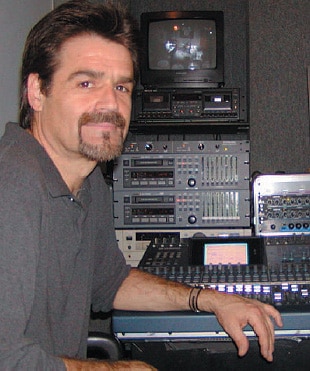Perfect Sound Forever
 |
 |
onsidering jazzs reputation as a music that's made best on a stage, it's strange that most jazz venues aren't built with a devoted recording space. And in the jazz capital, New York City, the square footage afforded to recording engineers in clubs is on par with that of a closet. "You know where they record at the Village Vanguard, right?" asks engineer David Ruffo. "In the kitchen. There's no food, but you're in between this and that and oh my God, what an environment. The kitchen is the dressing room; it's very strange."
Ruffo, who's been recording jazz for six years, has recorded at the Vanguard just once, when he captured a Johnny Griffin performance for his former employer, Global Music Network (GMN). Many of the recordings he did for GMN ended up available for listening at gmn.com,and many of these were made at Birdland, in its present location on 44th Street. Ruffo is Birdland's regular soundman and after witnessing some of the first performances in the club's current location by Diana Krall, Michael Brecker, Maynard Ferguson' big band decided to turn a portion of the dressing room into his own recording nest.
"We had some big names come in there and I was blown away," Ruffo reminisces. "[Later] I'd buy their CD. After seeing them live, the CD didn't always live up to the vibrancy of the live performance. I started thinking about that and then this engineer in Nashville said, 'You're missing an opportunity here. You should build a studio there and start recording these groups.' I didn't even want to go there I've owned a couple of studios before but I did it anyway. I started out with a Mackie console and built this little control room. It's all the way in the back, and I have a roll-down deli gate that keeps musicians out. I recorded Michel Petrucciani there and he's no longer with us it's just such a pleasure to have recorded these people while they were here. Live recordings, to me, are extremely special."
Since setting up the small studio, Ruffo has attempted to record every performance at Birdland. Prior to a show he calls the artist and asks if they'd like to have the show recorded. If he or she says, "Yes," Ruffo pulls out his collection of microphones (mostly Earthworks SR77s, which he thinks, for the money, hold up against expensive mikes very well) and prepares to record. The Mackie mixer has since been replaced with Yamaha's digital O2R96, which is a testament to Ruffo's claim that live recordings are special to him. The O2R96 is a seriously professional-sounding board and one that Ruffo doesn't feel the need to augment with outboard preamps in order to get great results. "I have some Earthworks mike preamps that I use when I run out of preamps on the board, but the Yamaha mike preamps sound real good to me," he explains before expounding further on his no-nonsense digital recording technique: "Basically, I go flat to tape. In digital it doesn't really hurt to do that. In analog I would compress, EQ and hit tape the way I wanted it to sound. When I first started doing digital I was doing it that way also, but always conservatively because it's kind of hard to hear. Even though I have a control room, it's still in the dressing room and you can hear booming coming through the walls and it's not a perfect world. I didn't want to make any extreme judgments. Now that I have the Yamaha board, I can do everything on the monitor side." Ruffo uses the Yamaha console for mixing as well, and chooses to use its compression and equalization features instead of routing the signal to other equipment. His efforts have resulted in an impressive list of recordings, some of which have found their way to CD including Bobby Sanabria's Afro-Cuban Dream: Live and in Clave!!! (Arabesque) and Marian McPartland's Reprise (Concord) and some that may remain archival recordings forever but if the vast amount of CDs we receive at JazzTimes every day is any clue about jazzs future, I wouldn't be surprised if every live set Ruffo ever caught on tape was eventually put on disc. For all the attention he pays to capturing the detailed sound of a live band, Ruffo isn't a purist. "With live recording it's your call as to what you want to do with the recordings. My tendency is to try and make records out of them. Some people are really religious about, 'OK, the piano is on the left side of the room bingo the piano is on the left side of the mix.' They'll have it really dry because maybe the room is dry." Ruffo's not that religious. "I don't make it sound all flowery and reverby by any means, but I try to dress it up a bit and make it sound pretty." Taken from September 2003 JazzTimes. Copyright 2003. All Right Reserved. Reprinted with permission. |
 |


